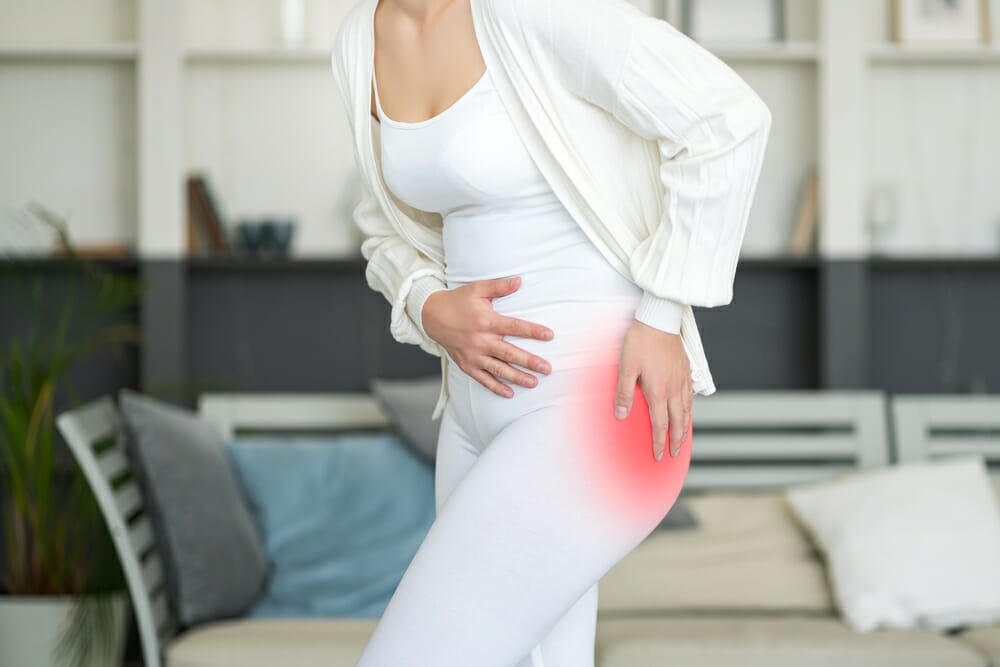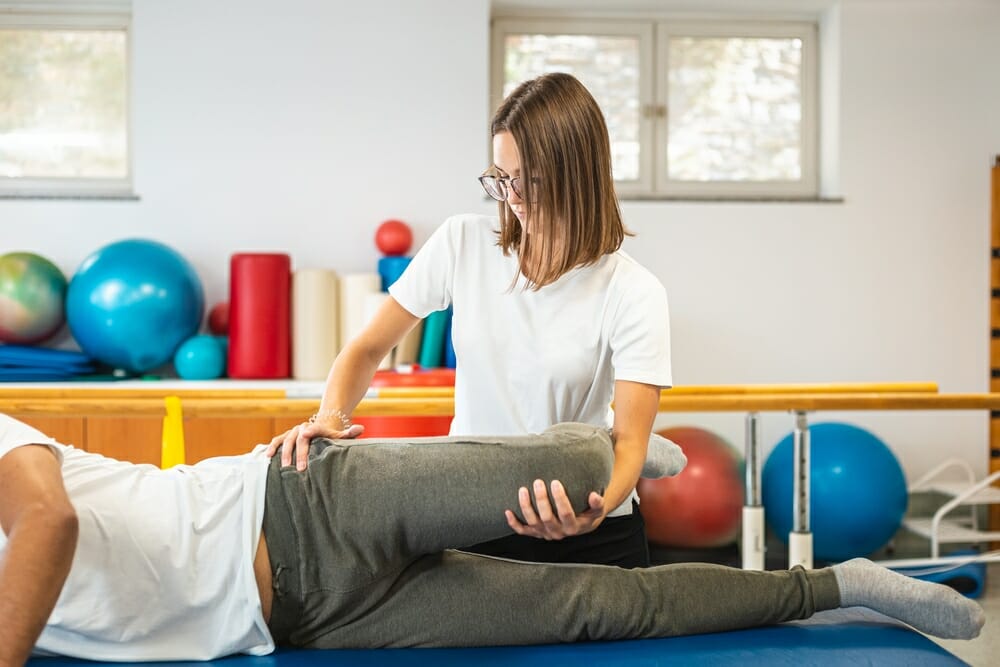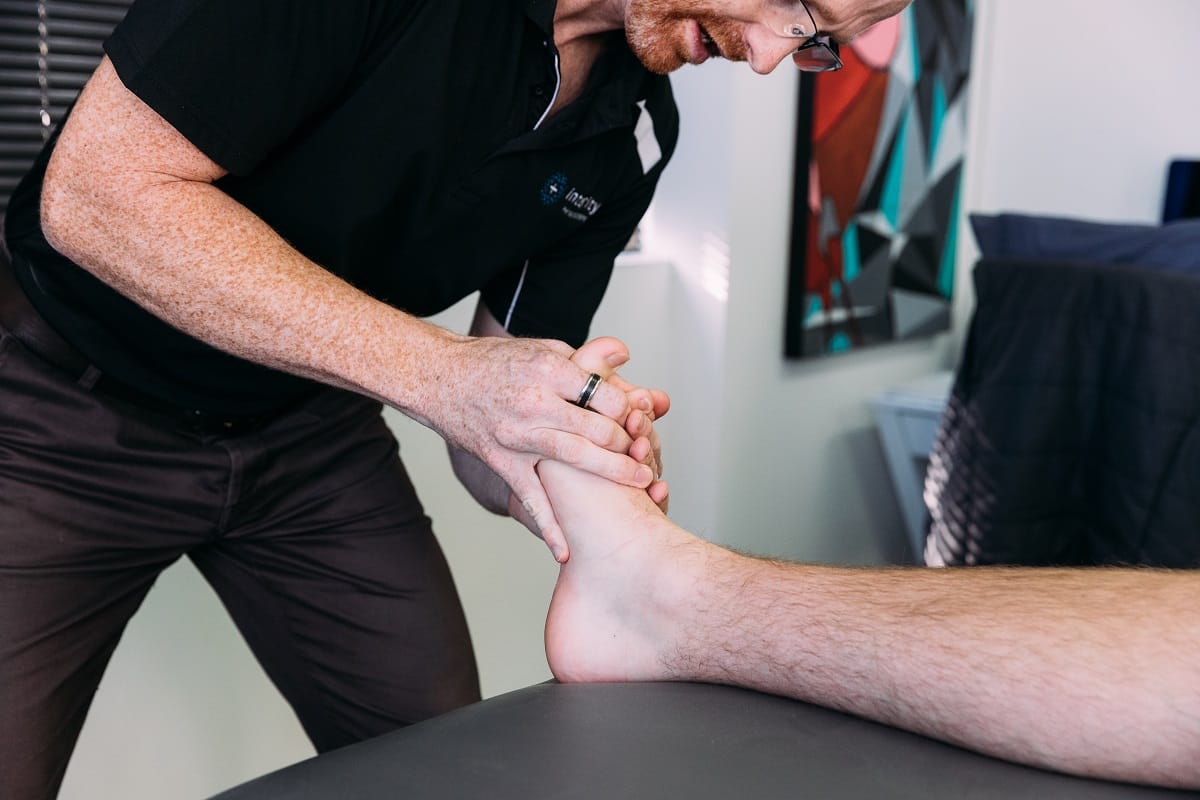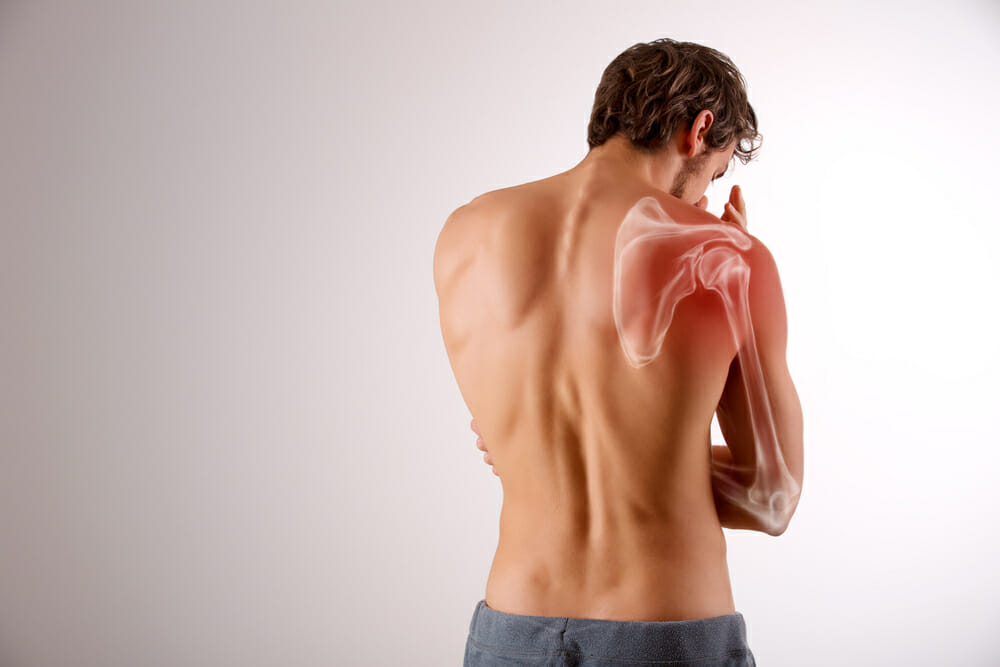
Experiencing pain in the hip can seriously affect your mobility, which can have a huge impact on your day-to-day life and your ability to perform daily activities. It can be a result of a variety of causes, so it can leave you wondering: how do I know if my hip pain is serious?
It is important to identify what may be causing your hip pain as people can experience varying degrees of discomfort and function loss. As a general answer to the question, when is hip pain serious, severe types of pain or loss of mobility should be assessed by a medical professional.
Types of hip pain
There are many types of hip problems so if you’re experiencing prolonged hip pain, consulting with your physio will help you determine the cause and the best treatment plan for you.
Hip osteoarthritis
This common type of arthritis is often the cause of hip pain, particularly in older adults. It is characterised by the deterioration of the cartilage that protects our hip bones, leading to friction which results in pain and inflammation.
Joint pain symptoms are often most prevalent in the morning, after physical activity or following extended sitting.
Hip bursitis
This is the inflammation of a bursa—a fluid-filled sac that cushions the bone’s surface—close to the hip joint. It can occur due to an old injury or if you have any underlying problems in your lower back that can affect your hip’s biomechanics. If left untreated, this condition can lead to chronic hip pain.
Symptoms may include pain along the side of your hip which worsens after repetitive motions or tenderness when you apply any pressure to the area.
Hip impingement
Bony growths can develop on the hip’s ball-and-socket joint, causing unusual contact between the bones. This can limit your range of motion and hip function. As they often develop after the cartilage between the bones is worn, this condition can be a result of osteoarthritis.
Symptoms can include pain in the groin area or along the outer hip, often described as a stabbing pain that is triggered by twisting or squatting movements.
Soft tissue or muscle injuries
Your hips are surrounded by intersected muscles, tendons and ligaments that can get over stretched or injured, resulting in pain and a reduction in range of motion.

Symptoms of hip pain
Knowing the common symptoms may help you to assess when hip pain is serious enough to seek medical help.
The symptoms related to hip pain can include:
- Pain in the groin or hip
- Stiffness
- Limping
- Swelling and tenderness
- Pain in the upper thigh or outer buttock
- Referred knee pain or lower back pain
- Tenderness
- Muscle weakness
- Fever, chills or redness (if your pain is caused by an infection—seek immediate medical attention if this is the case)
Causes of hip pain
Hip problems can be caused by a variety of things. It’s important to figure out what is causing your hip pain in order to properly treat it.
Arthritis
This is the most common cause of long-term hip pain. Osteoarthritis is the most common type of arthritis and can often affect the hip joint.
If this is the cause of your pain, you may be experiencing:
- Stiffness
- Muscle weakness
- Tenderness
- A grating sensation when you move your joints
Hip fractures
This type of hip injury is often seen in older adults or individuals with pre-existing mobility or joint issues. Hip fractures can be sudden and extremely painful, requiring immediate medical attention. Surgery and physiotherapy are common treatments for this cause of pain as they aim to help avoid developing chronic hip pain.
Fractures may cause:
- Swelling
- Deformity
- Loss of function
- Bruising

When to go to a physio
If you’ve caught yourself wondering: how do I know if my hip pain is serious, you should first assess your condition. If your hip pain isn’t severe and your range of motion isn’t impacted, it may be worth trying some of these at-home treatments.
Rest
If you’re experiencing pain, you should first try resting up by avoiding repetitive motions and activities that put direct pressure on the hip. When you are resting or sleeping, try not to rest on the affected side and ensure you are not sitting for prolonged periods of time—though it may seem counterintuitive, avoiding any movement altogether can worsen your pain.
Pain relievers
Taking over-the-counter pain relief may help ease your hip pain and avoid an unnecessary trip to the doctor.
Ice or heat
Wrap up ice cubes or a frozen bag of vegetables in a towel and apply the cold treatment to the source of your hip pain.
Treatment options could also include taking a warm bath or shower to take some pressure off and prepare your muscles for appropriate stretching exercises that may help to reduce pain.
Seek medical advice
If at-home treatments don’t make an obvious change to your symptoms or they show themselves to be persistent, book an appointment with your physio or doctor. For persistent pain it is important to build a treatment plan catered to your specific condition which can often include working with an experienced physio for hip pain for a while. This will help to increase your mobility and avoid requiring more serious management for your pain.
You should seek immediate medical attention if your pain is caused by a hip injury and is accompanied by:
- A joint that appears deformed
- Intense pain
- Sudden swelling
- Fever, chills or redness
- Inability to move your hip or leg



